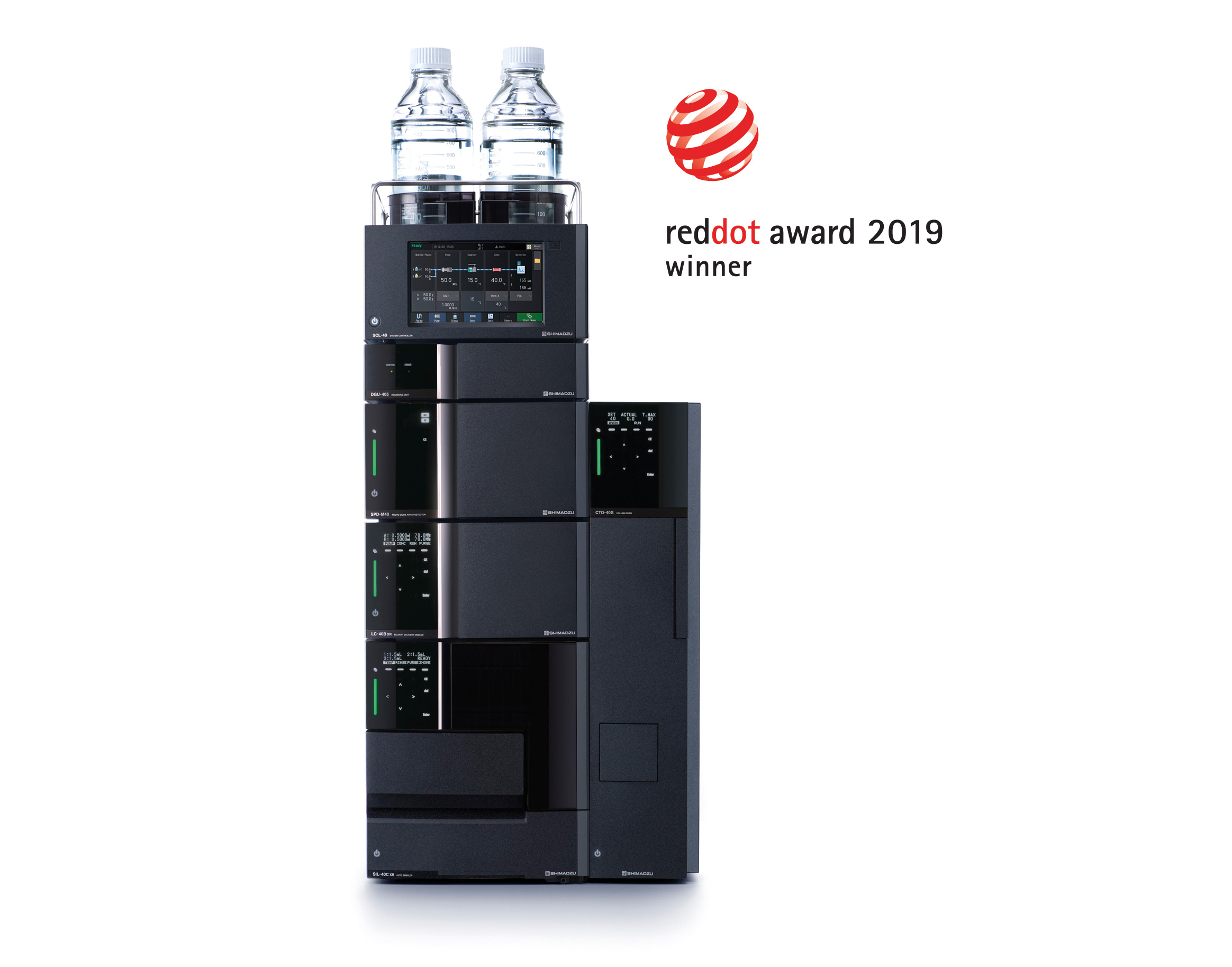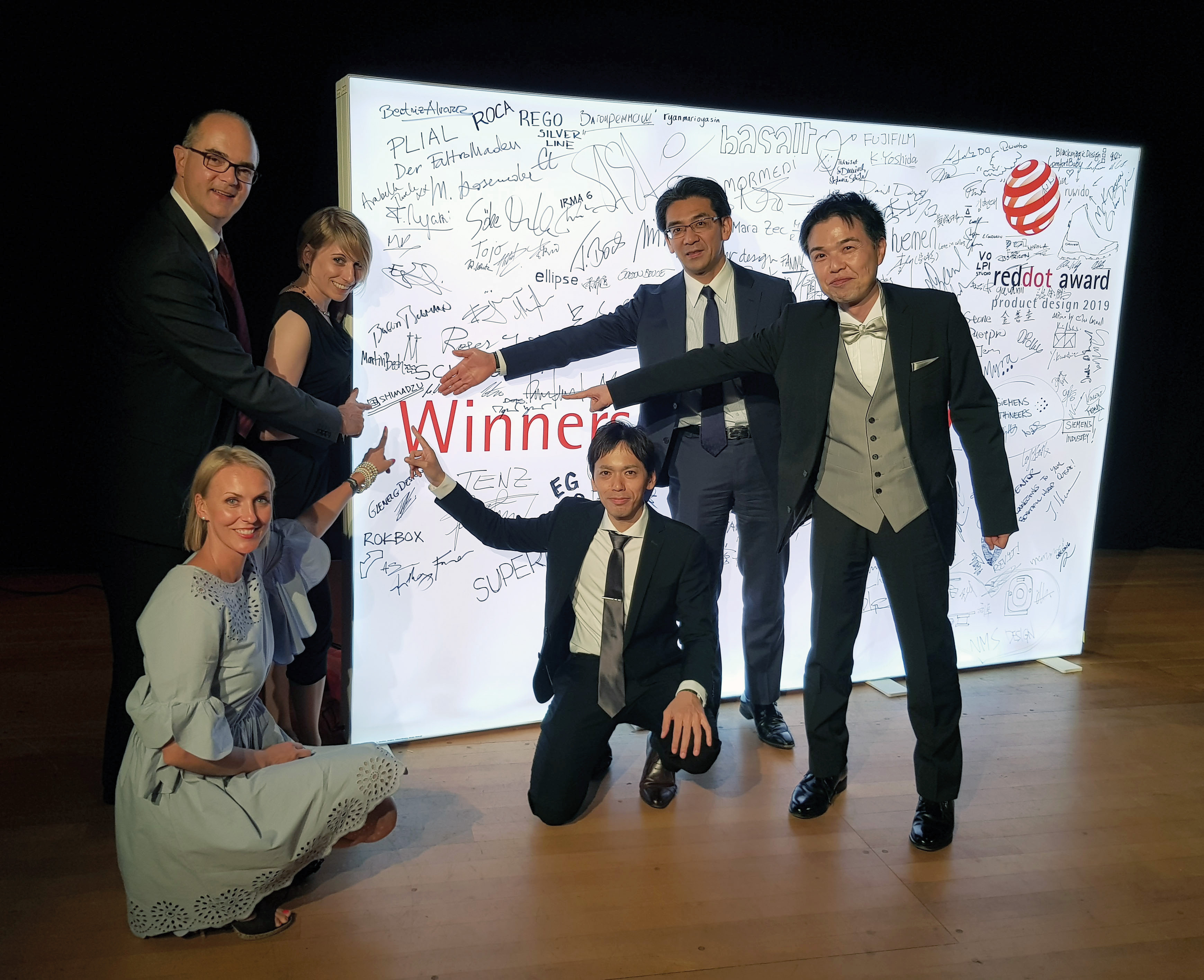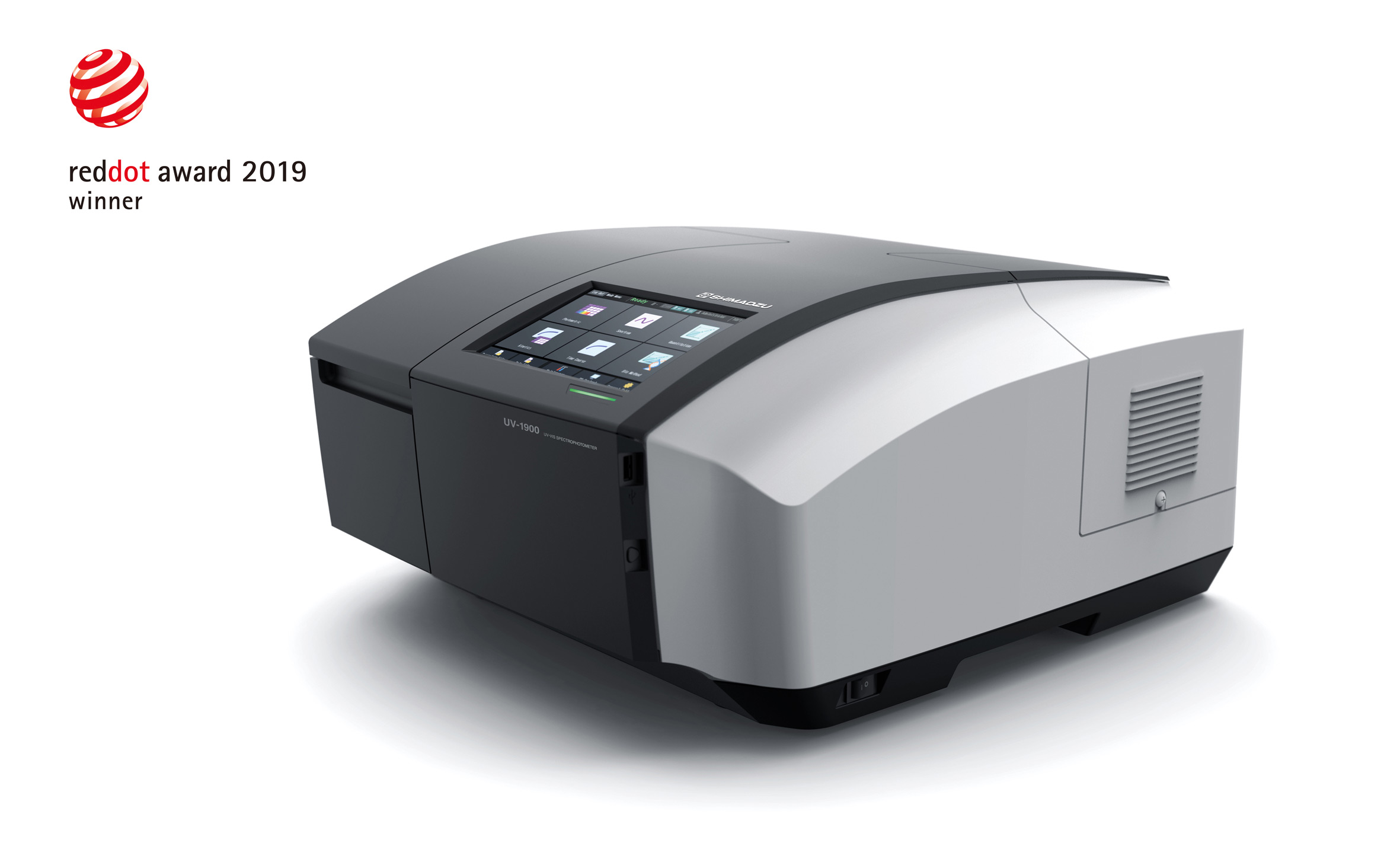Red Dot Design Awards for two Shimadzu instruments
The role of design in capital goods business
 Figure 1: Groundbreaking technology regarding intelligence, efficiency and design: the awarded Nexera LC-40 series.
Figure 1: Groundbreaking technology regarding intelligence, efficiency and design: the awarded Nexera LC-40 series.
The new Nexera UHPLC series LC-40 and UV-1900 UV-Vis spectrophotometer have been recognized with the Red Dot Design Award 2019 in the product design category. The award ceremony was held in Essen, Germany in July 2019. An actual Nexera series instrument and an explanatory panel showing the UV-1900 will be displayed in the city’s Red Dot Museum for the next year.
The Red Dot Design Award is one of the three major design awards in the world, alongside the German iF Design Award and the US IDEA Award. Manufacturers and designers from 55 countries submitted their works in the product design category.
Based on excellent design and innovation, functionality, quality, ergonomics and durability, a jury of experienced designers judged more than 5,500 products. Red Dot represents the best in design and business. The award covers the areas of product design, communication design and design concepts.
 Figure 2: Red Dot Design Award ceremony in Essen (Germany) on July 8, 2019
Figure 2: Red Dot Design Award ceremony in Essen (Germany) on July 8, 2019
The role of design in capital goods business
In the last years, Shimadzu systems have been recognized nine times with Red Dot as well as iF Design-Awards, e.g. for the AIM-9000 Infrared Microscope, the IRSpirit Fourier Transform Infrared Spectrophotometer series and the Q-TOF LCMS-9030 time-of-flight mass spectrometer.
Besides functional aspects, design also has a communication task – through its shape, appearance and look. The design of a product is voice as well as content talking to the user. Design is not only visually striking based on appearance, it also is a signal for technological innovation.
Users get their first impression through design. A new look of a product differentiates at first glance from former versions, attracting attention and calling the users for a closer look. In contrast, technological innovation in former versions’ housings would be wasting a business opportunity due to a lack of visual novelty and messaging.
 Figure 3: Distinctive design, ergonomic principles: the awarded UV-Vis spectrophotometer UV-1900.
Figure 3: Distinctive design, ergonomic principles: the awarded UV-Vis spectrophotometer UV-1900.
»Excellence in Science« translated into products
Beyond specifications and performance parameters, how does “Excellence in Science” translate into products and solutions? Or vice versa: how can a product speak “Excellence in Science”?
Just a brief look at the UV-1900 designed by Masakuni Tachi and Ryo Takegawa: the system features technological innovation such as the ultra-fast scanning function. It provides operational convenience, with for example the on-screen user interface with easy-to-see icons on a black background displaying instrument settings at a glance. Regarding ergonomics, the control panel design is based on these principles and is positioned at the very best viewing angle for the user. These functionalities and innovations are expressed through “distinctive design, which is characterized by light-dark contrasting and skillfully draws attention to the touchscreen”, as the Red Dot Award jury stated.
A technological innovation alone does not guarantee commercial success. The design needs to bridge the communicative gap to the users. For product development this means that design as an innovation signal should be an integral part of the product and its construction process. The best of both worlds is the fit between functional innovation and new design.
This way, design is a decisive part of the commercial success.
Experience New Benchmarks: the Nexera UHPLC LC-40 series
HPLC systems are able to quantitatively analyze substances in mixtures containing multiple ingredients by separating and detecting target substances. The “Nexera Series” applies groundbreaking technology in terms of intelligence, efficiency and design. By incorporating Internet of Things (IoT), Artificial Intelligence (AI) capabilities and sensor technology, the instrument’s users benefit from simplified workflows and increased laboratory efficiency. With its compact exterior, the design is adaptable to a variety of laboratory environments. The proportions of the modules have been optimized and designed to lend an attractive appearance to both the individual modules and the overall system.
Statement by the Jury
The design of Nexera combines straightforward lines with open asymmetries, giving rise to a very clear arrangement of the modules.
In-house design: Hyeri Kang, Ryo Takegawa